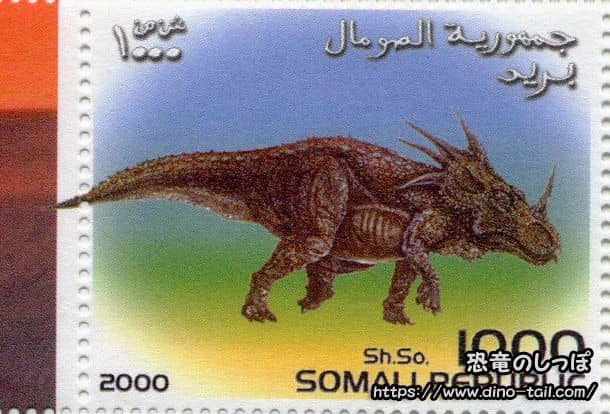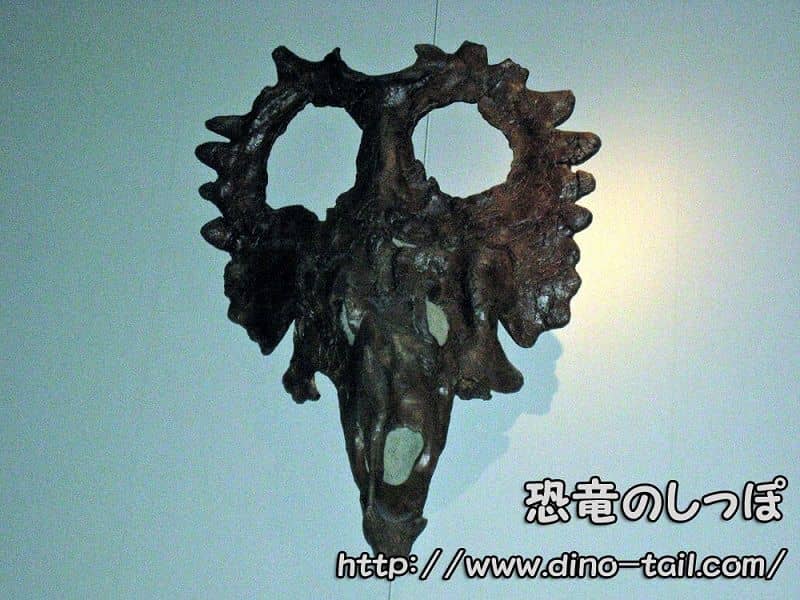About Styracosaurus
| Scientific Name (Genus) | Styracosaurus |
| Meaning of Name |
Spiked lizard
styrax (spike) [Greek] - sauros (lizard) [Greek] |
| Classification | Ornithischia, Marginocephalia (Ceratopsia, Ceratopsidae, Centrosaurinae) |
| Total Length | Approx. 5.5m |
| Diet | Herbivorous |
| Period | Late Cretaceous |
| Sub-classification/Species | Styracosaurus albertensis |
| Year of Paper Publication | 1913 |
| Publication |
A new genus and species from the Belly River Formation of Alberta. Ottawa Naturalist.
by Lawrence M. Lambe. 1913. |
Features
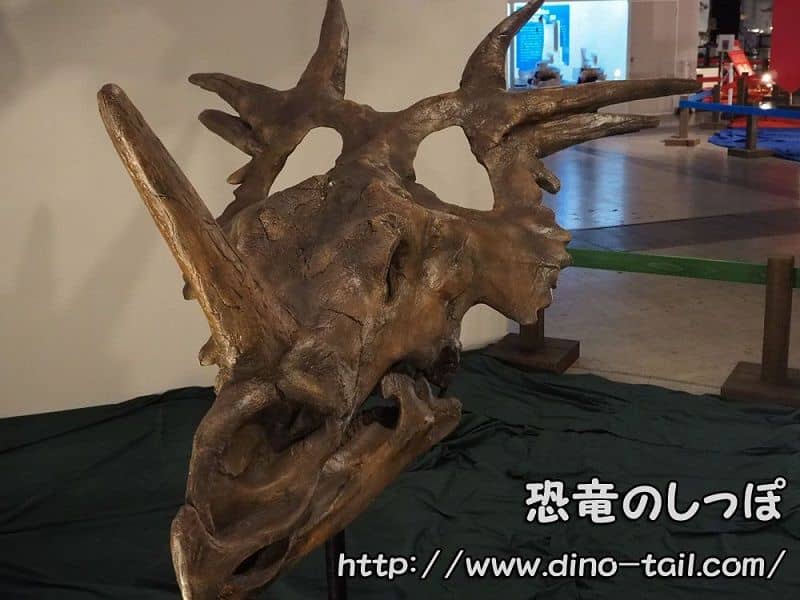
Styracosaurus is estimated to have been about 5.5 meters long and weighed 3 tons (3000 kg).
Although small for a ceratopsian from Late Cretaceous North America, it had quite spectacular horns on its head.
Six long spikes extended from the back of the Styracosaurus's frill, making it one of the most ornate frills among ceratopsians. The frill had large openings to reduce its weight.
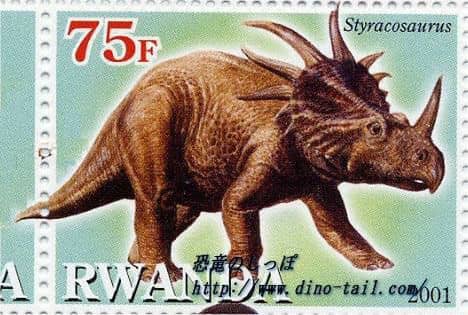
The large, ornate frill and horns are thought to have been used primarily for display to identify members of its species and for attracting mates, but they also appear to have been tools for intense combat.
Many skull fossils show signs of injury, such as healed fractures and holes that appear to have been made by the horns of other individuals. This suggests they regularly engaged in fierce battles over territory and mates.
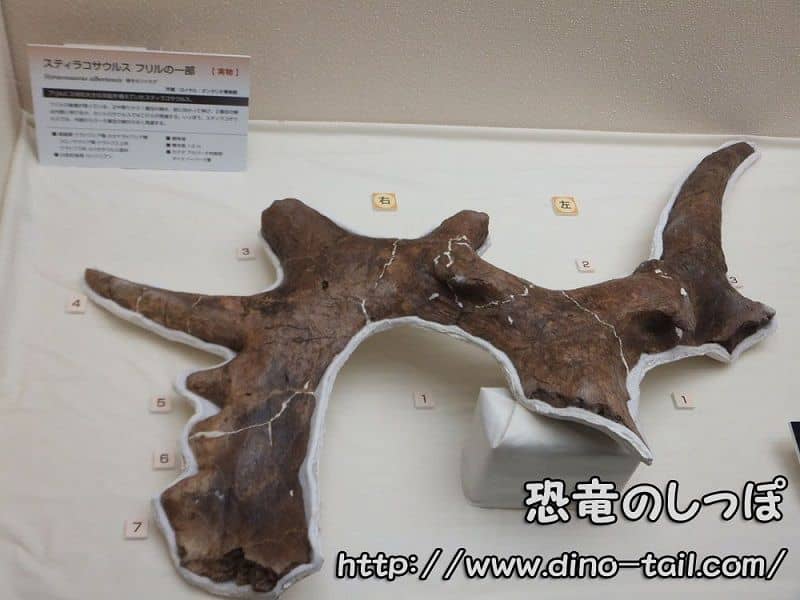
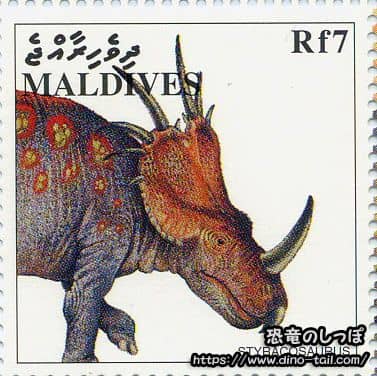
Discovery of a Massive Herd
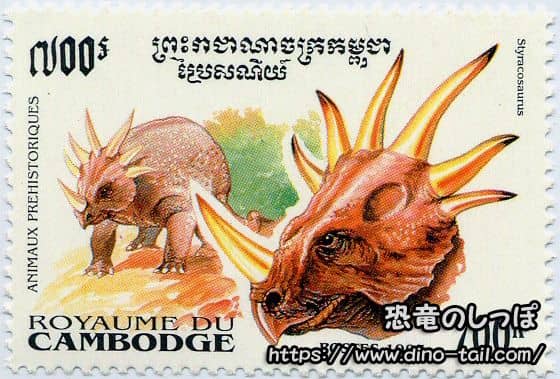
The fact that Styracosaurus lived in large herds has been revealed by a massive bonebed (a layer dense with fossils) discovered in Dinosaur Provincial Park in Alberta, Canada.
This bonebed contained the fossils of at least several hundred Styracosaurus individuals, from juveniles to adults, all found together. It is believed to be the site where an entire massive herd perished instantly due to a sudden disaster like a flood. This discovery is conclusive evidence that they were highly social animals, much like modern wildebeest or bison.
A Moment of Evolution?: The Relationship with "Rubeosaurus"
The study of Styracosaurus has taken an exciting turn in recent years. A ceratopsian with forward-curving frill spikes, discovered in younger rock layers in Montana, USA, was once thought to be a separate genus called Rubeosaurus .
However, the latest research published in 2020 has shown that it is highly likely that this Rubeosaurus is actually an evolved form of Styracosaurus over millions of years . Since typical Styracosaurus are found in older strata and Styracosaurus with "Rubeosaurus" features are found in younger strata, this may be a fossil record capturing a rare moment of evolution known as "anagenesis," where one species transforms into another over time.
If this theory is correct, the "Styracosaurus" we know not only changed its horn shape during its lifetime but also continued on an evolutionary path as a species.
First Publication
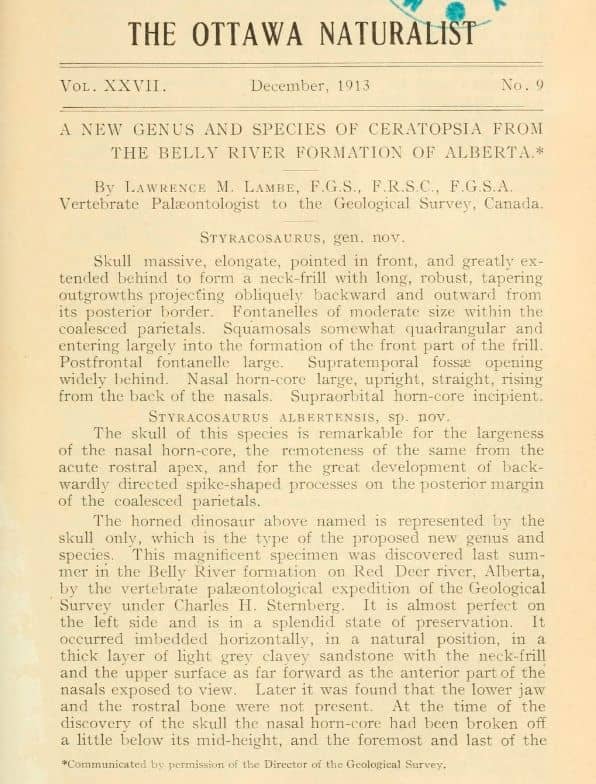
A new genus and species from the Belly River Formation of Alberta. Ottawa Naturalist
by Lawrence M. Lambe. 1913.
A ceratopsian discovered in Alberta, Canada, was named "Styracosaurus" by Lawrence Lambe in 1913.
Later, in 1935, a full-scale re-excavation was conducted by the Royal Ontario Museum of Canada, unearthing many skeletal fossils, including the lower jaw, which revealed that Styracosaurus was about 5.5 meters long.
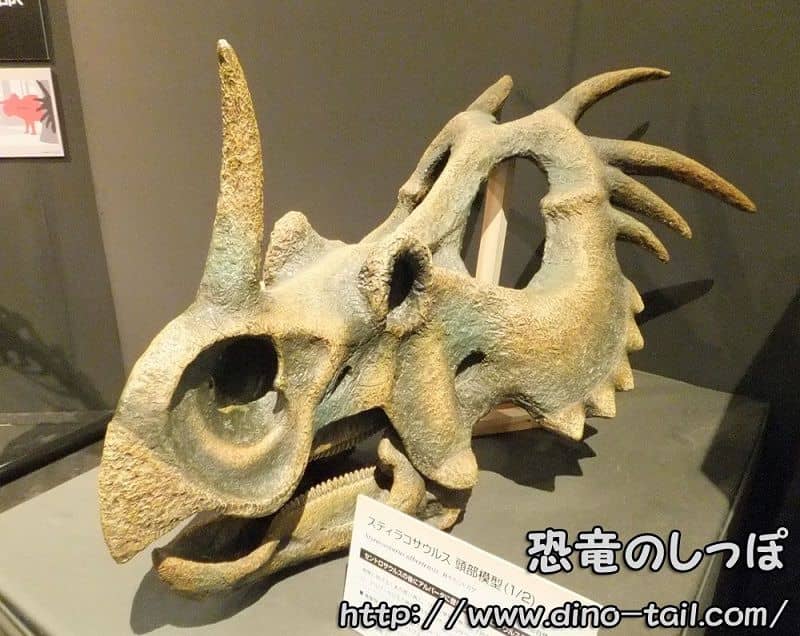
Styracosaurus Stamp and Fossil Gallery
